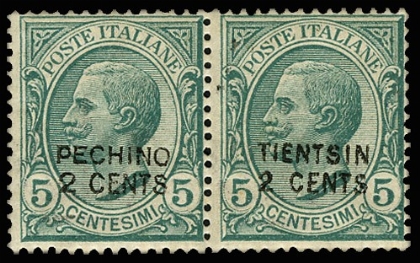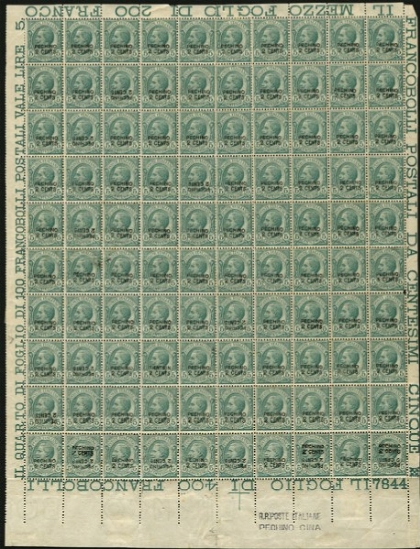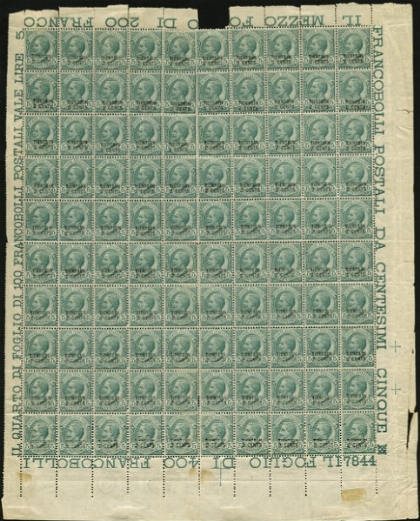New stamps for the Far East
The new stamps only appeared between September and November 1917. They were devised by the Ministry of Foreign Affairs for staff in the Legation and at the Consulate, for military personnel and the crews of Italian ships. There were ten of them overall, overprinted, and designed by Nestore Leoni and Francesco Paolo Michetti. They were intended for use at the Post Offices of Peking and Tientsin.
After the Boxer Rising in 1900, Italy obtained territorial concessions in the Far East.
This was the upshot of the crisis which began in March 1899 when the Chinese government refused to accept the orders coming from abroad and refused to cede territories to Rome.
As A.J.P. Taylor wrote in “The Struggle for Mastery in Europe”, “The chaotic, spontaneous uprising of the boxers was, after the Indian Rebellion of 1857, the greatest attempt by a non-European civilisation to defend itself against the Christian west”. Taylor recalls how the violence – one of the victims was the German ambassador Clemens von Ketteler – provoked other European countries to react.
There was enormous damage to the Chinese empire as a result: massacres, looting and destruction as well as vast indemnities to pay, guaranteed by foreign control of the Imperial borders. In addition to this, China had to cede new concessions and give Tientsin to Italy. In fact, Italy waited until September 1917 before opening civil post offices and introducing specific stamps. Military stamps and normal Italian stamps had been used up to that point.
The first issue is one of the most sought-after. It contains various varieties of overprints, which were done locally by hand: upside down, straight or slanted, double and even one right-side-up and one upside down on the same stamp.
The first issue is one of the most sought-after. It contains various varieties of overprints, which were done locally by hand: upside down, straight or slanted, double and even one right-side-up and one upside down on the same stamp.
Two items, thought to be unique, belong to the Zanaria archive. They are the quarter sheets of 2 on the 5 centesimi (containing one hundred pieces) overprinted for Peking or Tientsin . Looking at the former, one realises that it was relatively easy to mistakenly apply additional text. It numbers nine upside-down overprints, three doubles, one with a different face value and even one with the word “Tientsin”. The catalogue values the block for Peking at over 70,000 euros. The other, which contains no mistakes, is worth 90,000 euros as the individual stamps are more expensive. Both items have glue intact. Price upon request.
Perforated sheets remained in production until 1920. They contained thirty stamps for ordinary post bearing the name Peking, while there were twenty-five for Tientsin. In addition to these were two stamps for express post, and a dozen postage-due labels per city.
Even today, the collection of Italian post offices in China remains one of the most fascinating collections from the modern period of the Italian area.


